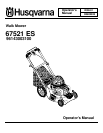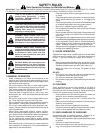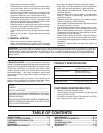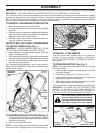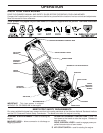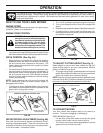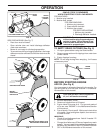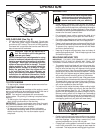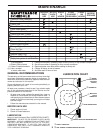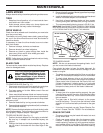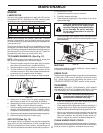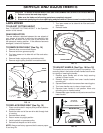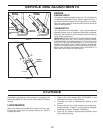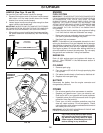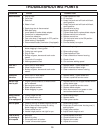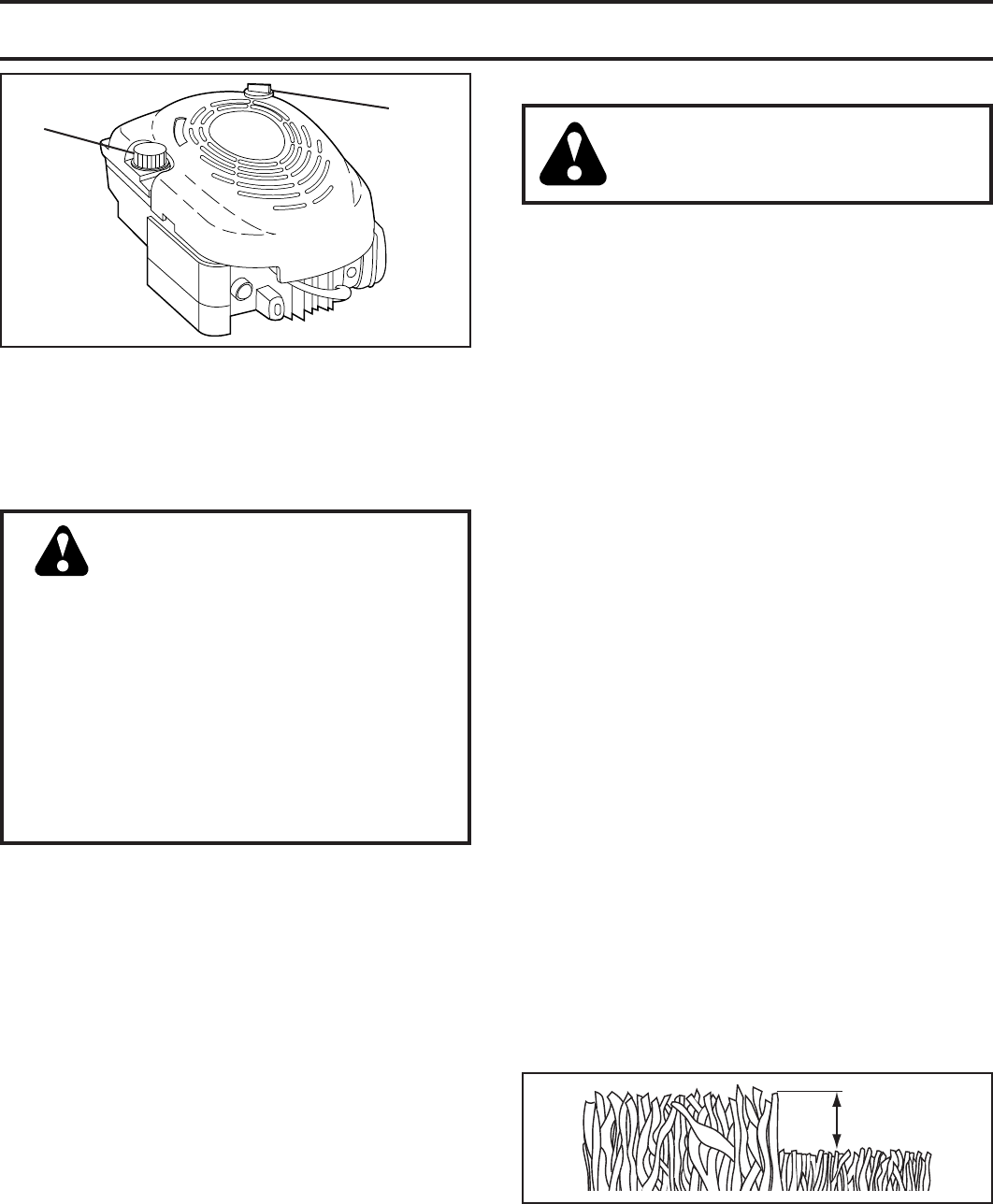
8
ENGINE
OIL CAP
GASOLINE
FILLER
CAP
FIG. 9
MOWING TIPS
CAUTION: Do not use de-thatcher blade
attachments on your mower. Such attach-
ments are hazardous, will damage your
mower and could void your warranty.
• Under certain conditions, such as very tall grass, it
may be necessary to raise the height of cut to reduce
pushing effort and to keep from overloading the engine
and leaving clumps of grass clippings. It may also be
necessary to reduce ground speed and/or run the lawn
mower over the area a second time.
• For extremely heavy cutting, reduce the width of cut
by overlapping previously cut path and mow slowly.
• For better grass bagging and most cutting conditions,
the engine speed should be set in the fast position.
• Pores in cloth grass catchers can become filled with dirt
and dust with use and catchers will collect less grass.
To prevent this, regularly hose catcher off with water
and let dry before using.
• Keep top of engine around starter clear and clean of
grass clippings and chaff. This will help engine air flow
and extend engine life.
MULCHING MOWING TIPS
IMPORTANT: FOR BEST PERFORMANCE, KEEP MOWER
HOUSING FREE OF BUILT-UP GRASS AND TRASH. SEE
“CLEANING” IN MAINTENANCE SECTION OF THIS MANUAL.
• The special mulching blade will recut the grass clip-
pings many times and reduce them in size so that as
they fall onto the lawn they will disperse into the grass
and not be noticed. Also, the mulched grass will biode-
grade quickly to provide nutrients for the lawn. Always
mulch with your highest engine (blade) speed as this
will provide the best recutting action of the blades.
• Avoid cutting your lawn when it is wet. Wet grass tends
to form clumps and interferes with the mulching action.
The best time to mow your lawn is the early afternoon.
At this time the grass has dried, yet the newly cut area
will not be exposed to direct sunlight.
• For best results, adjust the lawn mower cutting height
so that the lawn mower cuts off only the top one-third
of the grass blades (See Fig. 10). If the lawn is over-
grown it will be necessary to raise the height of cut to
reduce pushing effort and to keep from overloading
the engine and leaving clumps of mulched grass. For
extremely heavy mulching, reduce your width of cut by
overlapping previously cut path and mow slowly.
ADD GASOLINE (See Fig. 9)
• Fill fuel tank to bottom of tank filler neck. Do not over-
fill. Use fresh, clean, regular unleaded gasoline with
a minimum of 87 octane. Do not mix oil with gasoline.
Purchase fuel in quan tities that can be used within 30
days to assure fuel freshness.
CAUTION: Wipe off any spilled oil or
fuel. Do not store, spill or use gasoline
near an open flame.
Alcohol blended fuels (called gasohol or using
ethanol or methanol) can attract moisture which
leads to separation and for mation of acids dur-
ing storage. Acidic gas can damage the fuel
system of an engine while in storage. To avoid
engine problems, the fuel system should be
emptied before stor age of 30 days or longer.
Empty the gas tank, start the engine and let
it run until the fuel lines and carburetor are
empty. Use fresh fuel next season. See Storage
Instructions for additional information. Never
use engine or carburetor cleaner products in
the fuel tank or permanent damage may occur.
OPERATION
FIG. 10
MAX 1/3
TO STOP ENGINE
• To stop engine, release operator presence control bar.
TO START ENGINE
NOTE: Due to protective coatings on the engine, a small
amount of smoke may be present during the initial use of
the product and should be considered normal.
NOTE: Your engine is equipped with an automatic
choke system. No priming or choking is required before
starting.
• To start engine, hold operator presence control bar
down to the han dle and turn the start key.
IMPORTANT: Do not crank engine more than five conti-
nous seconds between each time you try to start. Wait 5
to 10 seconds between each attempt.
• To start engine using the rope start er, hold opera-
tor presence control bar down to the han dle and pull
starter handle quickly. Do not allow starter rope to
snap back.
• Certain types of grass and grass conditions may require
that an area be mulched a second time to completely
hide the clippings. When doing a second cut, mow
across (perpendicular) to the first cut path.
• Change your cutting pattern from week to week. Mow
north–south one week, then change to east–west the
next week. This helps prevent matting/graining of lawn.



